នៅក្នុងបរិស្ថាន តោគឺជាសត្វចតុបាទមួយប្រភេទរស់នៅក្នុងព្រៃ មានមាឌធំ ជើងបួន អង្គុយលើត្រគាកក្រោយ ឬឈរនៅលើជើងក្រោយ មានចង្កូមគួរឱ្យខ្លាច ហើយគេដឹងថាសត្វតោមានដំបូងនៅសម័យភ្លីអូសែន ប្រហែល ៥ – ១.៨ លានឆ្នាំមុន ក្នុងទ្វីបអាព្រិច ប្រហាក់ប្រហែលនឹងការកើតឡើងនៃពូជមនុស្សដែរ។ ប៉ុន្តែ នៅក្នុងសិល្បៈវិញ សត្វតោ ដើរតួនាទីជាសត្វទេវកថានៃសាសនាផ្សេងៗ ទាំងព្រះពុទ្ធសាសនា និងព្រហ្មញ្ញសាសនា។ តើចម្លាក់តោនៅក្នុងសិល្បៈខ្មែរ មានតួនាទីដូចម្តេចខ្លះ?
នៅក្នុងលទ្ធិព្រះពុទ្ធសាសនា កាលពីរវាងស.វ.ទី៣មុនគ្រឹស្តសករាជ នៅក្នុងស្រុកឥណ្ឌានារជ្ជកាលព្រះបាទអសោក (ក្សត្រដ៏ល្បីរបស់ឥណ្ឌាបុរាណ) ទ្រង់បានកសាងសសរមួយដែលនៅផ្នែកខាងលើឆ្លាក់រូបសត្វតោចំនួនបី។ ការឆ្លាក់រូបតោនៅខាងលើសសរបែបនេះ ក្នុងជំនឿថា សត្វតោជាសត្វអាចគ្រហឹម ឬស្រែកដោយអនុភាពខ្លាំងក្លានិងប្រកបដោយអំណាច ក្នុងន័យថា ការផ្សាយព្រះពុទ្ធសាសនាទៅកាន់ពិភពលោកឱ្យកាន់តែសុះសាយបន្ថែមទៀត។ នៅក្នុងស្រុកឥណ្ឌា គេច្រើនយល់ថា តោ គឺជានិមិត្តរូបនៃសន្តតិវង្សស្តេច និងជានិមិត្តរូបនៃច្បាប់ព្រះពុទ្ធសាសនា ដោយសារតែអំណាចឫទ្ធានុភាព និងការសំដែងធម៌ទេសនារបស់ព្រះពុទ្ធអង្គមានអំណាចដូចសម្រែកសត្វតោ។ ចំណែក នៅក្នុងព្រហ្មញ្ញសាសនាវិញ គេយល់ថាតោ គឺជាសត្វដែលមានភាពក្លាហាន មានអំណាចខ្លាំងក្លា ជាស្តេចនៃសត្វចតុបាទ រស់នៅខាងជើងភ្នំសុមេរុដែលជាស្នូលនៃចក្រវាល ដែលមានតួនាទីជាឆ្មាំចាំការពារភ្នំព្រះសុមេរុដែលជាទីស្ថានរបស់ទេពនិករទាំង ៣៣ គង់នៅ។ ដោយសារគំនិតនេះហើយ យើងឃើញចាប់ពីរវាងសតវត្សរ៍ទី៧ មក គេនិយមឆ្លាក់រូបសត្វតោជាចម្លាក់ក្តី ជាបដិមាក្តីនៅតាមប្រាសាទខ្មែរ ព្រោះគេយល់ថាសត្វតោជាឆ្មាំនៅចាំការពារស្ថានរបស់អាទិទេព (ប្រាសាទ គឺជាទីស្ថានរបស់អាទិទេព)។ ឧទាហរណ៍ នៅតំបន់ប្រាសាទសំបូរព្រៃគុកស.វ.ទី៧ គេតែងឆ្លាក់រូបសត្វតោមានស្លាប លាយឡំជាមួយសត្វមានតេជៈផ្សេងៗទៀតដូចជា គ្រុឌ សេះ កិន្នរ ទ្រវិមានអណ្តែតដែលគេឆ្លាក់នៅតាមជញ្ជាំងប្រាសាទ។ គំនិតនេះនៅតែបន្តរហូតដល់សម័យក្រោយទៀត ឧទាហរណ៍ ចម្លាក់ថ្មទម្រសិវបាទមួយរកឃើញនៅប្រាសាទកំពង់ព្រះ ខេត្តកំពង់ឆ្នាំង ស.វ.ទី៨ គេឆ្លាក់រូបតោចំនួន ៧២ នៅជុំវិញថ្ម ព្រោះថ្មនេះតំណាងឱ្យទីស្ថានរបស់ព្រះឥសូរដែលជាអាទិទេពកំពូលនៃព្រហ្មញ្ញសាសនា ម្ល៉ោះហើយ តោដែលគេឆ្លាក់មកនេះ គឺជាឆ្មាំនៅចាំការពារសំណង់ដូចគ្នាដែរ។
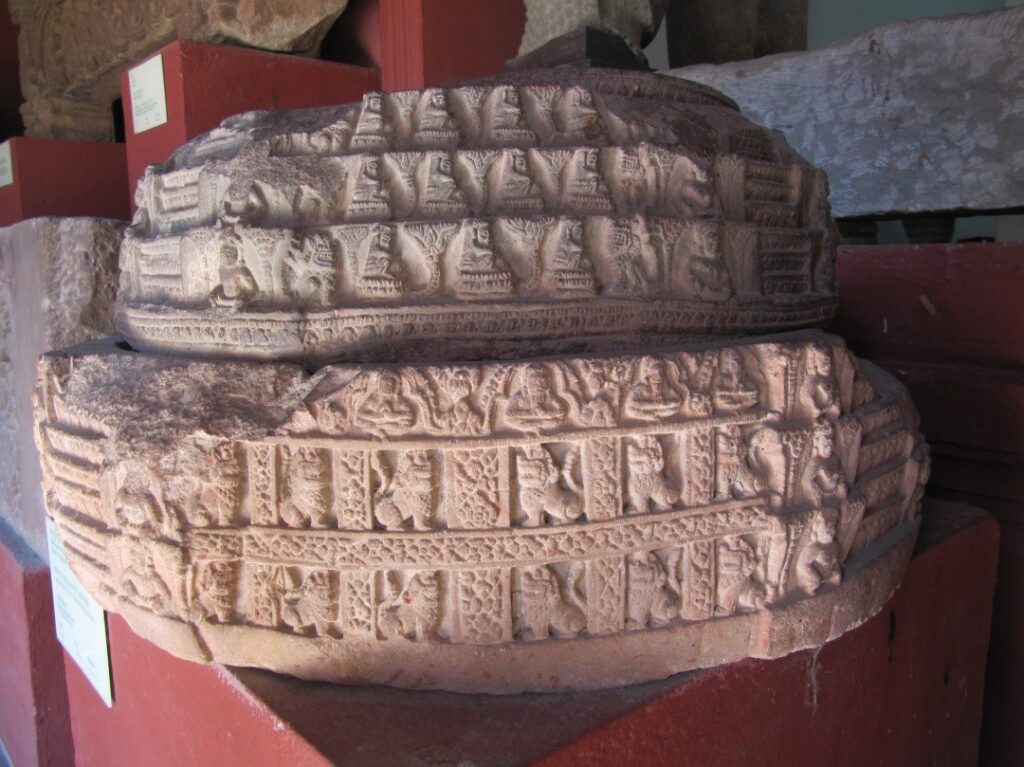
ក្រៅពីចម្លាក់ទាំងនះ យើងឃើញមានសិល្បករឆ្លាក់រូបតោធ្វើជាបដិមានៅឈរចាំយាមប្រាសាទ ឧទាហរណ៍ បដិមាតោរកឃើញនៅប្រាសាទលោក ខេត្តកំពង់ធំ (ស.វ.ទី៨) បដិមាតោនៅប្រាសាទភូមិប្រាសាទ (ស.វ.ទី៨) បដិមាតោនៅប្រាសាទតោ សំបូរព្រៃគុក (ចុងស.វ.ទី៨)។ លុះមកដល់សម័យអង្គរ ការឆ្លាក់បដិមាតោជាឆ្មាំការពារសំណង់នេះមានភាពពេញនិយមយ៉ាងខ្លាំង ព្រោះគេតម្កល់រូបតោនៅខាងមុខស្ទើរតែគ្រប់ប្រាសាទទៅហើយ ឧទាហរណ៍ បដិមាតោនៅប្រាសាទដំរី តំបន់កោះកេរ បដិមាតោនៅប្រាសាទព្រះវិហារ បដិមាតោនៅប្រាសាទបាយ័ន្ត។
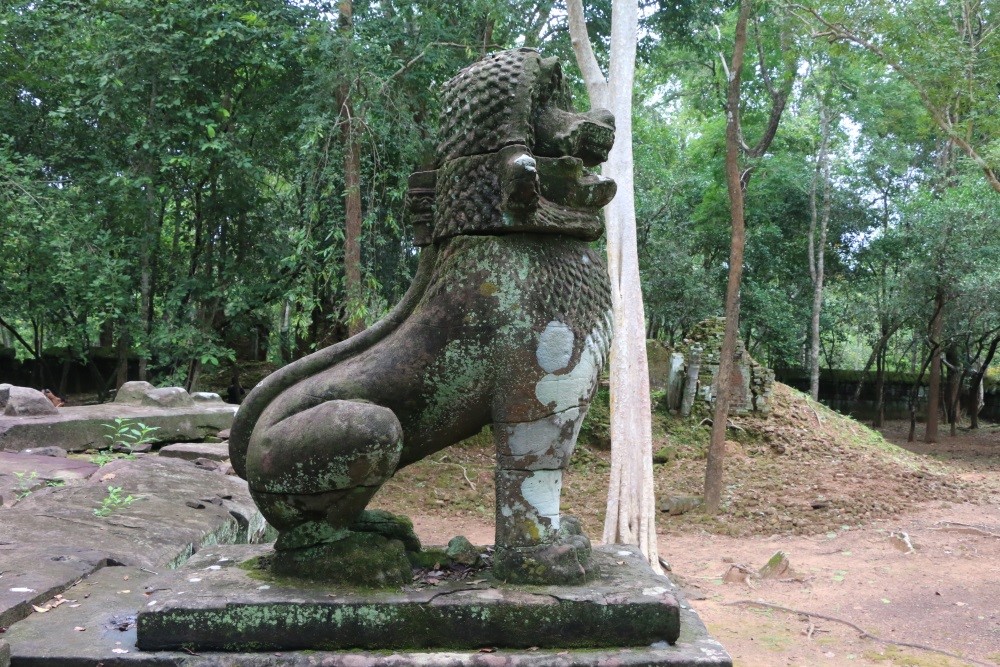
ក្រៅពីការឆ្លាក់រូបតោជាឆ្មាំយាមសំណង់ទេព ចម្លាក់តោនៅក្នុងសិល្បៈខ្មែរក៏ដើរតួនាទីជាយានជំនិះរបស់ទេពនៅក្នុងព្រហ្មញ្ញសាសនាទៀតផង ដូចជា យានជំនិះព្រះឥសូរ ព្រះនាងទុគ៌ា ព្រះកេតុ។ល។ ជាក់ស្តែង រូបព្រះឥសូរជិះតោនៅលើផ្តែរទ្វារប្រាសាទភ្នំជើងព្រៃ ស.វ.ទី៧ រូបតោឆ្លាក់ជាប់ជើងទម្រប្រាសាទប្រាង្គ តំបន់កោះកេរ ស.វ.ទី៩ ចម្លាក់តោជាយានជំនិះព្រះនាងទុគ៌ា រកឃើញនៅសំបូរព្រៃគុក ចម្លាក់តោជាយានជំនិះព្រះកេតុនៅលើផ្តែរទ្វារប្រាសាទវត្តប្រាសាទ (នៅសារមន្ទីរខេត្តព្រៃវែង) ស.វ.ទី១០។
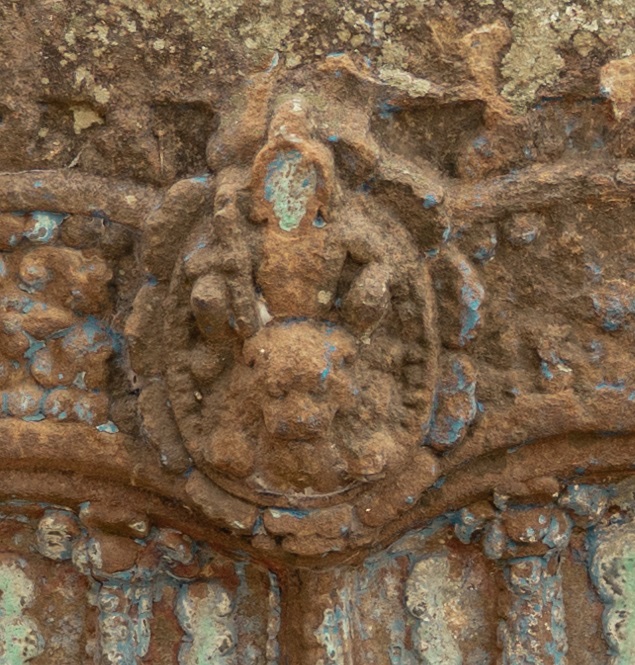
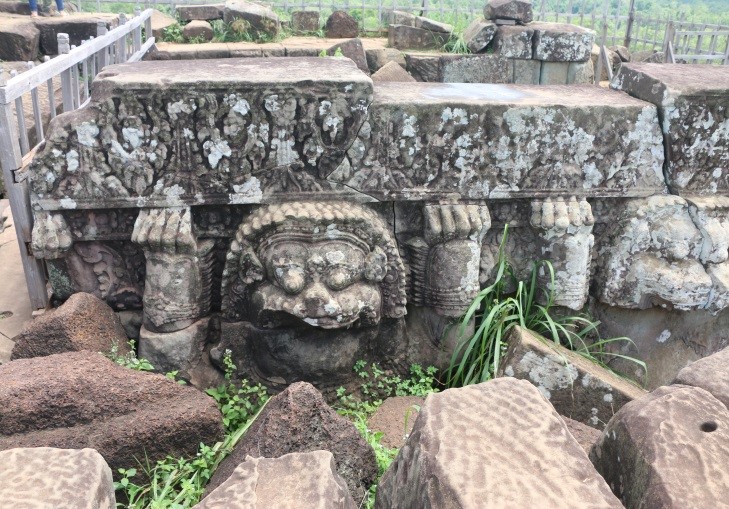
ក្រៅពីនេះទៀត យើងឃើញថា ចម្លាក់តោមួយចំនួននៅតាមប្រាសាទខ្មែរ គេអាចឆ្លាក់ឡើងក្នុងភាពជាលម្អស្ថាបត្យកម្ម។ ឧទាហរណ៍ ចម្លាក់តោនៅលើផ្តែរប្រាសាទបន្ទាយស្រី ស.វ.ទី១០ ចម្លាក់តោលើផ្តែរប្រាសាទមេបុណ្យខាងកើត ស.វ.ទី១០។
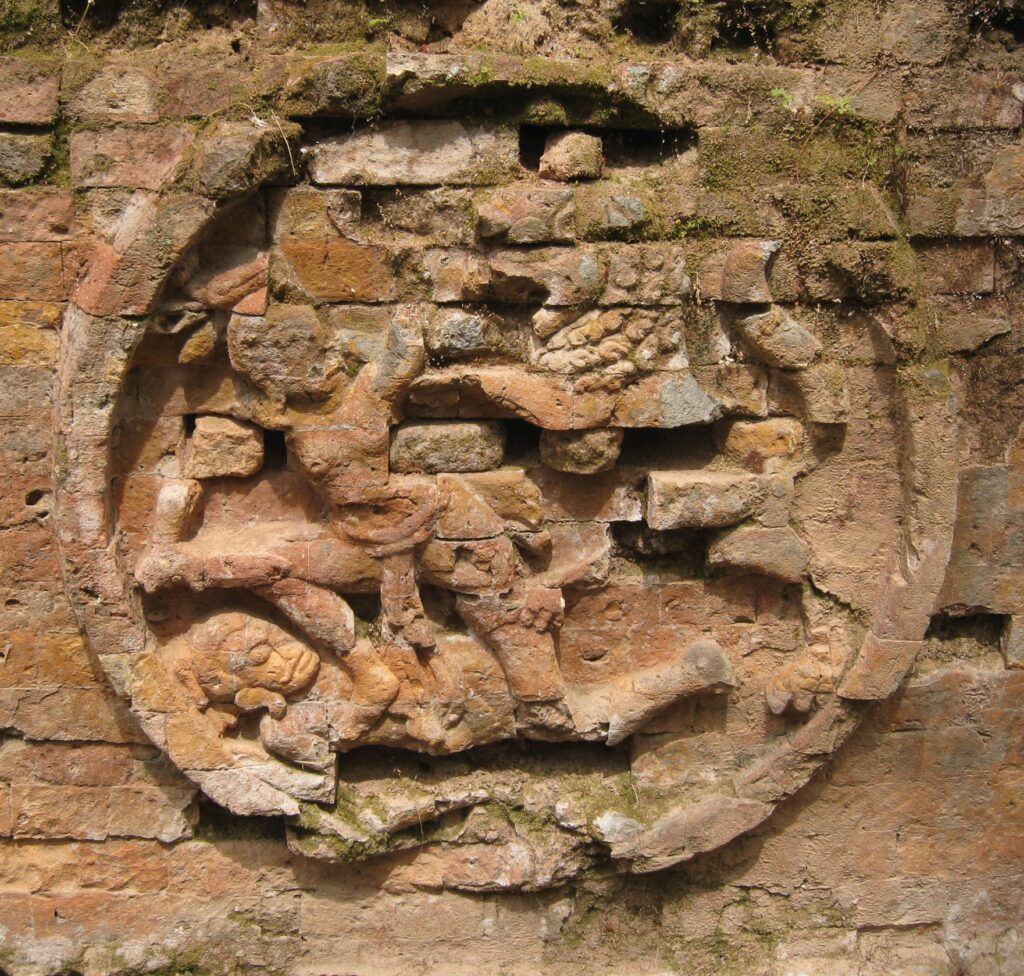
ជារួមមក យើងឃើញថាចម្លាក់តោដែលគេដាក់នៅតាមសំណង់ប្រាសាទបុរាណខ្មែរនៅសម័យបុរាណ គឺដោយសារគេគិតថាសត្វតោជាស្តេចនៃសត្វចតុបាទដែលមានអនុភាពខ្លាំងពូកែរស់នៅខាងជើងភ្នំព្រះសុមេរុជាទីស្ថានអាទិទេពគង់នៅ ម្ល៉ោះហើយនៅពេលគេឆ្លាក់សត្វតោដាក់នៅខាងមុខប្រាសាទ គឺមានតួនាទីជាឆ្មាំចំាំយាមរាល់សភាវៈអាក្រក់ទាំងឡាយណាដែលប៉ុនប៉ងចូលប្រាសាទនិងជាទូទៅយើងឃើញថាបដិមាតោច្រើនដាក់នៅជាមួយសត្វដំរី គ្រុឌ និងនាគ។ លើសពីនេះ ចម្លាក់តោទាំងនោះក៏ដើរតួនាទីជាយានជំនិះរបស់ទេពផ្សេងៗនៅក្នុងលទ្ធិព្រាហ្មណ៍សាសនា ដូចជា ព្រះឥសូរ ព្រះនាងទុគ៌ា ព្រះកេតុ ។ល។ ក្រៅពីនេះទៀត ចម្លាក់តោក៏មានតួនាទីជាក្បាច់លម្អរបស់ប្រាសាទ ឬលើកតម្កើងអនុភាពប្រាសាទឱ្យកាន់តែជាសំណង់ដែលខ្ពង់ខ្ពស់។ ប្រពៃណីនេះ នៅតែបន្តមកសម័យបច្ចប្បន្ន ដូចយើងឃើញនៅតាមសំណង់ព្រះពុទ្ធសាសនា តាមក្លោងទ្វារវត្ត ខាងមុខចេតិយ។ល។ គេនៅតែនិយមឆ្លាក់បដិមាតោជាឆ្មាំនៅចាំការពារ ហើយជួនកាលទៀត សូម្បីតែនៅមុខផ្ទះក៏មានដាក់ចម្លាក់បដិមាតោដែរ៕
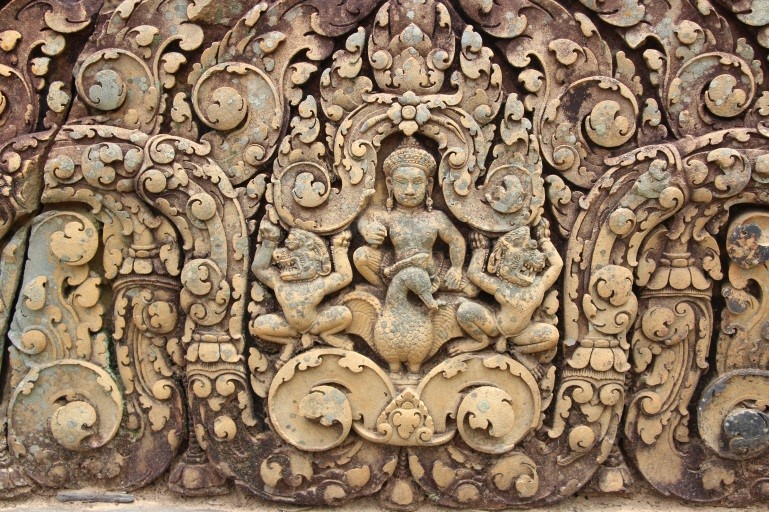
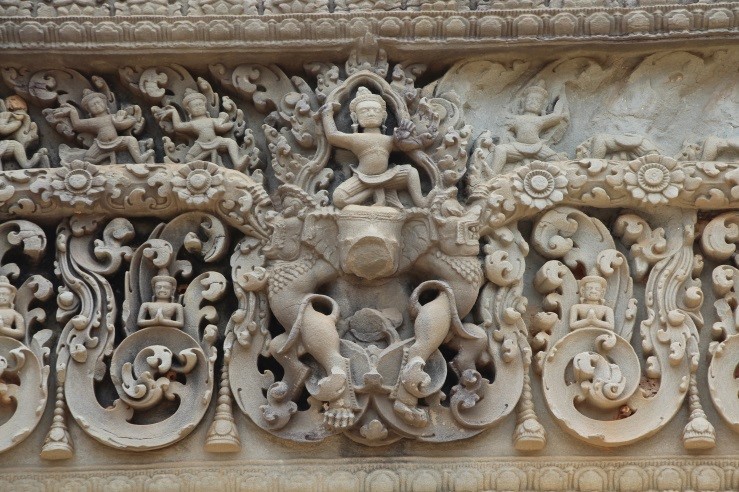
————————————
The function of the statue of the Lion in Khmer Arts
The lion appeared in Africa about 5-1.8 million years ago in the Pliocene period. It is almost similar to the birth of a Human being. In Khmer Arts, Lion is a mythical animal. For instance, Buddhism and Hinduism. What is the function of the Lion in Khmer Arts?
In Buddhism, between the 3rd century in India, King Asoka established a column decorated with three lions on the top. Lion can roar and has power. Therefore, it helps the spread of Buddhism to the world. In India, Lion is the symbol of Royalty and the symbol of Buddhist law. It is because Buddha breaching had the power of the roar of a lion.
In Hinduism, the lion has courage, and power, and is the king of animals. He lives at the foot of Meru which is the core of the universe. He is a guardian of Meru which is the place of the 33 Gods. Accordingly, in the 7th century, the statues of lions were made and carved to put in the temples. For instance, in Sambo Prei Kuk, 7th century, the lion tends to have wings like Garuda, horse, Kinnari/ra and supported the flying Vimana. This concept has been used in the later period. For example, the support of a Shivapada from Kampong Preah, in the 8th century, has 72 figures of lions all around. It is because this stone represents the place of lord Shiva, the principal God in Hinduism.
Besides, there are many statues of Lion standing on the sides of temple gates. For instance, the statues of Lion at Prasat Lok, Kampong Thom in the 8th century. The statues of Lion at Prasat Phum Prasat in the 8th century, Prasat Tor Sambo Prei Kuk at the end of the 8th century. Up to the Angkorian period, the statues of the lion as the temple’s guardian were common. For instance, the statues of lions at Prasat Damrei in Koh Ker, Prasat Preah Vihear, or Prasat Bayon.
Furthermore, the lion is a vehicle of deities in Hinduism; Shiva, Durga, and Ketu. For example, Shiva sits on a lion carved on a lintel of Prasat Choeng Prei, 7th century. The figure of lions on the pedestal at Koh Ker, 9th century. A lion as a vehicle of Durga was found at Sambo Prei Kuk, and a lion as a mount of Ketu was carved on the lintel of Prasat Vat Prasat in the 10th century. In addition, the statues of Lions could be used as decoration in the temple. For instance, the statues of lions at Prasat Banteay Srei in the 10th century. The figures of lions on the lintel of Prasat Mebon, 10th century.
In conclusion, the lion is the king of animals. It is placed at the temple based on his power. He lives at the foot of Meru, the place of Gods. Accordingly, the statues of lions were built and placed in the temples to be a guardian. Generally, statues of lions are found together with other animals such as elephants, Garudas, and Nagas. In addition, the lion is a vehicle of deities in Hinduism such as Shiva, Durga and Ketu. Furthermore, the statues of lions used to decorate the temple. This tradition remains to practice currently. It could be seen in the religious structures of Buddhism, the gate and the stupa. Sometimes, statues of lions are put in front of houses.
អត្ថបទដោយ៖ ម៉ង់ វ៉ាលី






